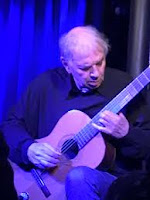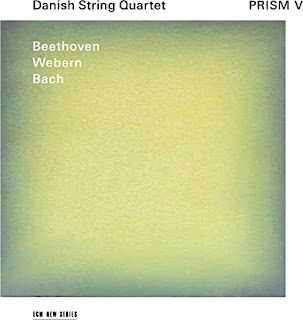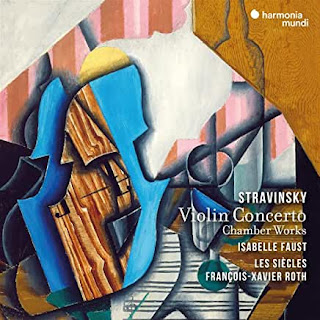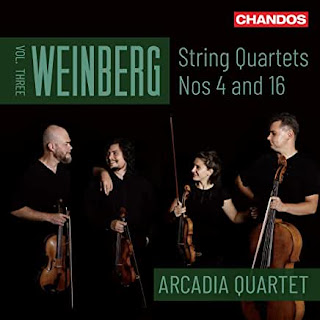by Ryan Ross
Danish National Symphony Orchestra; Fabio Luisi, conductor. Deutsche Grammophon 486 3471 (3 CDs)
I had high hopes for this one. Being someone who believes that concert programming, and classical music history as it’s normally relayed, are too much in thrall to Late Romantic (especially German) aesthetics, I see renewed focus on composers like Carl Nielsen as a viable way out of the morass. His highly individual, appealing music is a breath of fresh air. It emphasizes rigor, energy, optimism, and (as musicologist Daniel Grimley puts it) life-affirmation. I keep hoping we’ll more fully admit Nielsen into the classical canon as the great symphonist he was, and that our current Mahler/Bruckner/etc. obsessions will subside enough to allow this. So yes, I was thrilled to see Fabio Luisi’s and the DNSO’s new recorded cycle appear on perhaps classical music’s most prestigious label. This had to be a wonderful tool for the cause, right?
Not so much. Oh, the DNSO’s playing is good, and the sound quality is fine. It’s Luisi’s vision of Nielsen’s music that makes the venture objectionable. To be blunt: he doesn’t feel it. He’s a relative newcomer to this repertoire – someone who’s used to conducting music we’re already well used to hearing. Well, these symphonies in his hands sound too much like music we’re already well used to hearing. The result is not just mostly poor Nielsen, but also a weary accompanying realization that Mahler and Bruckner have indeed seemed to permeate everywhere, ostensibly even performances of scores by the Great Dane.
The biggest problem here is Luisi’s lack of energy. We’ll discuss two instances for the sake of example. In the score of the Second Symphony (subtitled “The Four Temperaments”), Nielsen clearly indicates a tempo marking of eighth equals 126 at the head of the opening movement. Luisi, however, comes in at about 106 to 108. This would be weird in any case, but in a movement entitled “Allegro collerico” (indicating the “choleric” temperament), a slow pulse simply doesn’t get the job done. Luisi himself may not be of such a disposition, but he’s obligated to use the orchestra to do his best impression if he’s conducting this music. Has he met anyone who is choleric? Those folks typically don’t saunter. Maybe worse is the finale of the Fifth Symphony. Again, Luisi proceeds noticeably under the composer’s tempo marking, and in a setting where doing so similarly saps the music of its character. The whole movement is one of epic struggle; from the roiling outer sections, to the terrifying cataclysm of the first fugue, to even the slower “rebirth” presented by the second fugue, this music requires spark and momentum. Instead, the dominant impression is one of lethargy. It comes across like somebody trying to run a marathon immediately after scoffing a huge plate of spaghetti.
Related to tempo problems are Luisi’s dynamics and phrase shaping. They’re just too steeped in late Romanticism. Nielsen’s music at times shares something with Romanticism, but there is a rather stronger Classical streak present that greatly leavens this overlap and clashes with Luisi’s apparent instincts. A good example is how he conceives the finale of the Third Symphony, subtitled “Espansiva.” Evidently Luisi takes this term to mean “expansive” as in imitating exaggerated Romantic climaxes. Instead of the open-air hymn to hard work and common rural experience (which would be consistent with Nielsen’s own remarks on this section), the tune and its supporting materials become just another Mahlerian lied, with gushy strings and overwrought arrivals. Combine these things with another slow tempo (I cannot imagine why this movement needs to clock in at 10:59!), and we’re quite far from the spirit of the work. Similar interpretive miscues hamper nearly every performance here, from the odd dynamic spasms (heard right away in the First Symphony), to poorly accentuated subject lines in fugal sections, to excessive disruptions of tempo.
Probably the best performance in this cycle is of the Sixth and final symphony, named the Sinfonia semplice. Still the least understood work of a too-little-known composer, it is singular and delightfully strange. For these reasons, it’s probably the best symphony of the bunch to withstand the kind of interpretive “license” that the conductor inflicts upon its brethren. For once Luisi’s tempi and shaping are solid; the finale is appreciatively humorous. This is not the best performance of the Sixth available, but it will serve. Would that it could be issued on a singleton release.
But on the whole these recordings present a missed opportunity. Even if they do become influential in spurring more performances of Nielsen’s music in the concert hall, will those performances sound like these? That’s a dispiriting train of thought. Thus motivated, I’ll lend my tiny voice to suggesting Herbert Blomstedt’s fine cycle with the San Francisco Symphony on the London label as a preferred alternative. (Schonwandt/DNSO, Salonen/SRSO, and Kuchar/JPO are all good, too.) In terms of isolated performances, Leonard Bernstein’s renderings of the Third and Fifth with the New York Philharmonic on Sony are stupendous. If you don’t know Nielsen’s symphonies, start there. Leave Luisi and Company to the collectors.





























